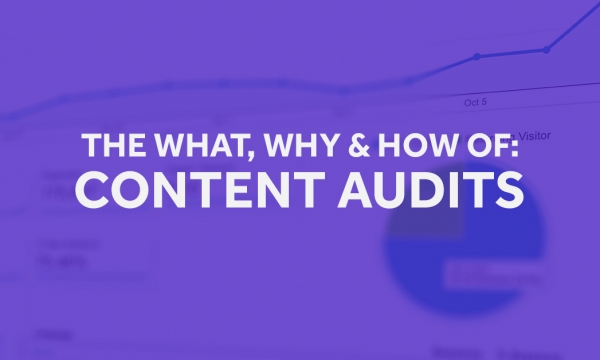2018 was a big year for content marketing strategy but, after a series of changing trends from Google and consumers, what should your content strategy look like in 2019?

The best-laid plans of mice, men and marketers were put to the sword in 2018. Along with a regulatory crackdown on influencer engagement and the furore around microtargeting with customer data, the shift to voice search threw multiple spanners into the web works.
Even marketers happy to keep their head down and publish regular, honest-to-goodness written content are still reeling from the impact of Google’s E-A-T algorithm update. If 2018 was the year for unexpected events, you’d think 2019 might be the time to play it a little safer.
But we all know that’s not how it works. In 2019, content marketing will be about cutting through the noise to make your message stand out. Each piece of content should be carefully crafted with performance and purpose in mind.
Don’t shy away from the usual updates – interesting content that uses schema mark–up to structure your data and delivered with just the right amount of customer insight is still a vital part of your digital marketing efforts.
However, careful consideration of how your content could potentially reach new customers means new ways of delivery. The core content hub is a vital part of successful digital marketing, but an effective strategy should also consider how to reach audiences elsewhere in the customer journey. Not only could it boost your on-site engagement rates, but a valuable mode of messaging could reach readers experiencing ‘pain points’, increase social stats and convert new customers.
Here then are the kinds of content that have emerged as serious contenders for 2019.
Data-led long form content

The E-A-T update wreaked havoc on top-performing websites across ’Your Money, Your Life’ sectors such as financial services, legal and medical information. When the smoke cleared, eagle-eyed observers spotted that sites affected were sorely lacking in the onsite display of authoritative brand-led messaging. Since then a focus on producing content that preaches ‘expertise, authority and trust’ has been the order of the day.
We’ve seen the rise of increasingly sophisticated ‘long reads’ on publications like the BBC and The Guardian, bringing high-quality journalism to in-depth explorations of a variety of subject matter. What’s more, while infographics were once the darling of attention span-starved social media users, the demand for long form content means these hard-hitting bite-sized hits of data can now be carefully unravelled and given the spotlight they deserve. Time-conscious readers may not be as inclined to carry on, but brands are helpfully indicating an average reading time to try and sway them back.
Publishing a mix of relatable, user-generated and rich informational content on your website leaves a product or service-sized hole around the problem, drawing in a curious audience while you eventually – and naturally - serve up the solution without over-egging it.
Whitepapers

Choose informational content to build up your brand’s all-encompassing understanding of the problems customers face in and around their field – and drive home your own commitment to solving them with a whitepaper.
A whitepaper combines surveys, expert analysis and rich background information to provide well-produced, engaging and actionable content. According to the 2016 Content Preferences Survey, “96% of respondents want content with more input from industry thought leaders.” A whitepaper allows you to prove your industry credentials, unrestricted by website templates and EAT guidelines, and bolstered by generating leads through email signups.
Video

One study on video marketing conducted at the start of 2018 appeared to confirm the doubts which may carry into 2019 – ‘inadequate video budget’ is one of the biggest hurdles to overcome.
Video can be an invaluable aid in delivering several of your brand’s KPIs for shareability and engagement, but there is a perception that video can be an expensive process. This cost can however be reduced through a careful planning of your video strategy and an efficient use of the resources to produce that content. Video recording equipment is usually hired on a day-rate basis, so think about how you can utilise those resources to produce as much as possible. It's an approach akin to the budget airline model - the aircraft is a fixed cost and so the more flights you can get out of that aircraft, the cheaper the per-flight cost becomes.
By structuring your video content strategy around maximising the number of videos that you can create from a single daily hire, you can amortise that cost over multiple videos and in many respects, this can result in video being more cost effective than many other forms of content.
Video is admittedly an expensive and completely different way to deliver content, but can be an invaluable aid in delivering several of your brand’s KPIs for shareability and engagement. With time on page and bounce rates factoring into a website’s authority and expertise via its ranking on Google, video is also an extremely versatile form of content.
Publishing video alongside other helpful informational content – and especially transcribing the video for accessibility – means optimising key terms on-page in order to drive more traffic.
Covering everything from DIY tutorials to customer success stories, incorporating a range of consumer-focused feature videos into your strategy showcases the sort of user-first thinking that addresses customers’ needs – the same ones that caused a 70% year-on-growth in ‘how to’ searches on YouTube.
Webinars

A combination of the above two approaches – in-depth thought leadership delivered through a visual medium – blends the best of both into engaging, problem-solving content.
Webinars also tear down the barriers between consumer and content providers, which may make for a nervous live experience but can be an extremely useful way to present your on-the-spot troubleshooting skills. Take questions from virtual attendees ahead of and during the webinar, so you can demonstrate the kind of on-your-feet thinking that’s missing from carefully-constructed blog posts and pre-records.
Plus, as an added delight, drive traffic and boost time on page on your website by adding each webinar to your content archive. Our stats show that two-thirds of Stickyeyes-produced webinar content to date is watched on demand.
Voice search

The proliferation of voice devices has been a major discussion point in recent years, with suggestions that around one in every ten Wi-Fi-connected homes has a smart speaker, and there are one billion voice searches per month. Those stats alone should drive any brand to salivate over the potential of voice commerce and content, but it’s probably a better fit for certain brands over others.
Where voice search fits in a brand's marketing strategy is up for debate, but it's important to consider the ways in which consumers that do use these devices are using them.
Various surveys suggest that the most common types of voice commands are consist of asking for directions, searching for a local business, getting traffic alerts and playing music, so consider whether this type of behaviour could be consistent with what your audiences are looking for. If you are in the travel or transport industry for example, this type of behaviour may align quite closely with your brand's audiences.
We’ve known for some time that Google’s featured snippets present a golden opportunity for brands to establish authority in their field, by matching for informational search queries. But as users make a switch to voice search for the sake of convenience, they’ll want an equally speedy and concise response. Because Google sees its Position Zero as the answer to any given question a user can ask it, the fight for prime real estate is set to intensify further.
Take the topics and keywords where you’ve garnered the most marketing influence and research into how the questions you answer most effectively can be phrased more conversationally. Niche content creators stand to benefit the most from simplifying the essence of their key talking points here – turning walls of impenetrable jargon into simple Q&As that aim to explain and educate.
The impact of Google’s E-A-T update has caused many affected brands to reassess their current content offering. Specifically, how to inject the authority and trustworthiness it needs to compete for top spot again. Meanwhile, consumer habits continue to diversify as attention spans ebb and flow.
A successful content strategy in 2019 needs to identify the opportunities, risks and rewards in both areas and grasp the opportunities as they present themselves.


